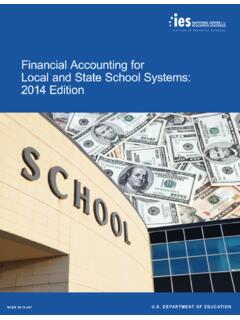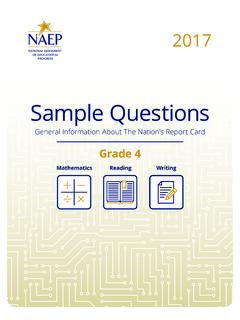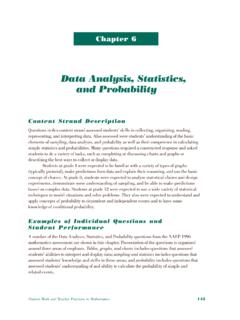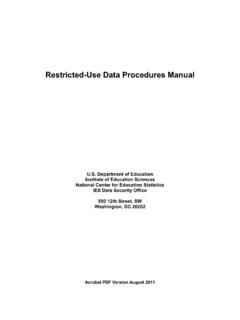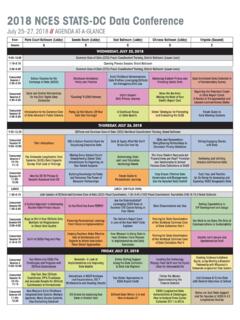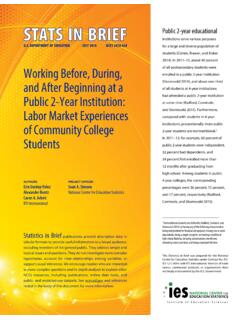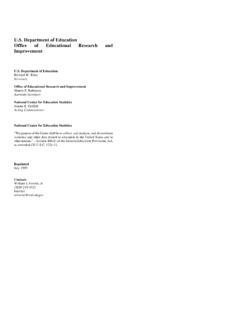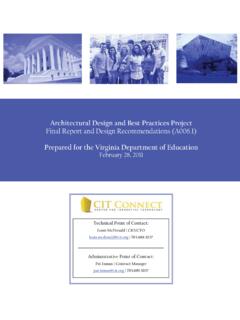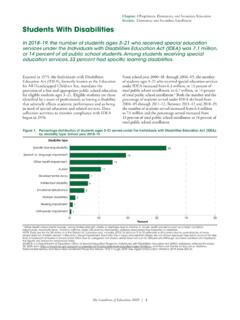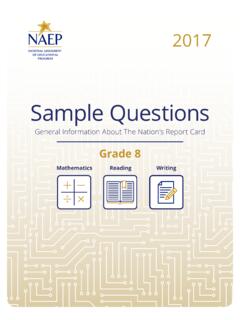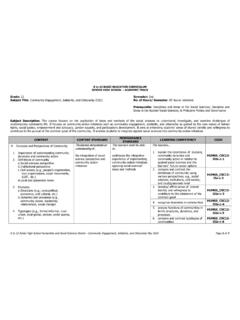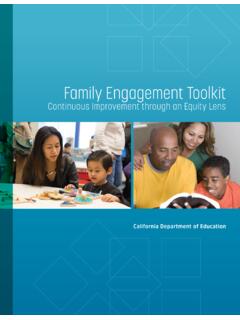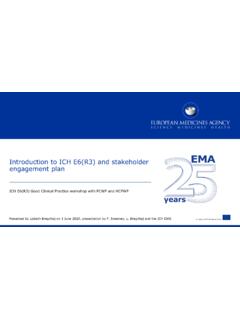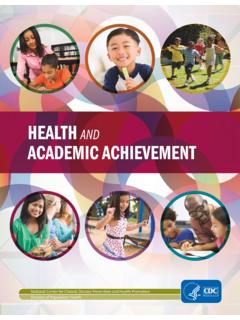Transcription of What Matters to Student Success: A Review of the Literature
1 What Matters to Student Success: A Review of the Literature Commissioned Report for the National Symposium on Postsecondary Student Success: Spearheading a Dialog on Student Success George D. Kuh Jillian Kinzie Jennifer A. Buckley Indiana University Bloomington Brian K. Bridges American Council on Education John C. Hayek Kentucky Council on Postsecondary Education July 2006. July 2006. TABLE OF CONTENTS. Section Page 1 INTRODUCTION, CONTEXT, AND OVERVIEW .. 1. Purpose and Scope .. 3. 2 DEFINITIONS AND CONCEPTUAL FRAMEWORK .. 5. Framework for Student 7. 3 MAJOR THEORETICAL PERSPECTIVES ON Student SUCCESS IN. COLLEGE .. 11. Sociological 11. Observations About the Tinto 12. Social Networks.
2 12. Organizational Perspectives .. 13. Psychological Perspectives .. 13. Cultural 14. Economic Perspectives .. 15. Summary .. 16. 4 THE FOUNDATION FOR Student SUCCESS: Student . BACKGROUND CHARACTERISTICS, PRECOLLEGE EXPERIENCES, AND ENROLLMENT 17. Student Background Characteristics and Precollege Experiences .. 18. Gender .. 18. Race and Ethnicity .. 18. academic Intensity in High School .. 19. Family Educational 19. 21. Educational Aspirations and Family Support .. 22. Socioeconomic Status .. 22. Financial 23. Precollege Encouragement Programs .. 25. Enrollment 27. Multiple Institution Attendance .. 28. Summary .. 29. 5 WHAT Student BEHAVIORS, ACTIVITIES AND EXPERIENCES IN. POSTSECONDARY EDUCATION PREDICT SUCCESS?
3 31. Expectations for College .. 32. College 34. iii Minority-Serving 39. A Closer Look at Engagement in Effective Educational Practices .. 40. Faculty- Student 41. Peer 42. Experiences with Diversity .. 43. Cocurricular 44. Student 44. Student 45. First-Generation Students .. 45. Race and Ethnicity .. 45. International Students .. 46. Transfer Students .. 46. Fraternity and Sorority Members .. 47. Student Athletes .. 47. Summary .. 48. 6 WHAT INSTITUTIONAL CONDITIONS (POLICIES, PROGRAMS, PRACTICES, CULTURAL PROPERTIES) ARE ASSOCIATED WITH. Student SUCCESS? .. 51. Structural and Organizational 52. Institutional Attributes: Residence Size, Type, Sector, Resources and 52. Campus 53. Sector.
4 53. Structural Diversity .. 54. Organizational 55. Institutional 55. Minority-Serving Institutions .. 56. Programs and 57. New Student Adjustment .. 58. 58. First-Year 58. Advising .. 59. Early Warning 60. Learning 60. Campus 63. Student Success 63. Remediation .. 64. Student Support Services .. 65. iv Teaching and Learning 66. Educational 66. Pedagogical Approaches .. 67. Active and Collaborative Learning .. 68. Feedback .. 69. Instructional 69. Student -Centered Campus Cultures .. 71. Partnerships to Support 72. Designing for 72. Institutional Ethic of Improvement .. 73. Summary .. 73. 7 HAT ARE THE OUTCOMES AND INDICATORS OF Student . SUCCESS DURING AND AFTER COLLEGE?.. 75. College and Postcollege Indicators.
5 75. Grades .. 75. Economic Benefits and Quality of Life .. 77. Learning and Personal Development Outcomes .. 78. Cognitive Complexity .. 79. Living and Work Environments .. 79. Knowledge Acquisition and academic 81. 82. Interpersonal and Intrapersonal 83. Student -Faculty Contact .. 84. Living 84. Practical 84. Student -Faculty Contact .. 86. Single-Sex Institutions .. 86. Summary .. 86. 8 ROPOSITIONS AND RECOMMENDATIONS ABOUT Student . SUCCESS IN POSTSECONDARY 89. Propositions and Recommendations .. 89. Needed 100. A Final Word .. 105. 107. v LIST OF APPENDIXES. Appendix A: Note on Research Method .. 149. Appendix B: Indicators of Student Success in Postsecondary 151. LIST OF TABLES.
6 Table 1 Correlations between institutional mean scores of NSSE clusters of effective educational practices and institutional graduation rates (N=680 4-year colleges and universities) .. 36. LIST OF FIGURES. Figure 1 What Matters to Student 8. 2 Student background characteristics and precollege 17. 3 Factors that threaten persistence and graduation from college .. 27. 4 Student behaviors and Student engagement .. 32. 5 Impact of engagement in educationally purposeful activities on first-year GPA (be pre-college achievement level) .. 35. 6 Level of academic challenge for seniors, by 37. 7 Student -faculty interaction: First-year students at 12 liberal arts colleges .. 38. 8 Who's more engaged?
7 39. 9 The relationship between Student success and institutional conditions .. 52. 10 Learning community participation rates, by Carnegie classification .. 62. 11 Recommended components of developmental education initiatives .. 65. 12 Student success outcomes .. 75. 13 Outcome domains associated with college attendance .. 78. 14 Principles for strengthening precollege 90. vi July 2006. 1. INTRODUCTION, CONTEXT, AND OVERVIEW. Creating the conditions that foster Student success in college has never been more important. As many as four-fifths of high school graduates need some form of postsecondary education (McCabe 2000). to prepare them to live a economically self-sufficient life and to deal with the increasingly complex social, political, and cultural issues they will face.
8 Earning a baccalaureate degree is the most important rung in the economic ladder (Bowen 1978; Bowen and Bok 1998; Boyer and Hechinger 1981; Nu ez 1998; Nu ez and Cuccaro-Alamin 1998; Pascarella and Terenzini 2005; Trow 2001), as college graduates on average earn almost a million dollars more over the course of their working lives than those with only a high school diploma (Pennington 2004). Yet, if current trends continue in the production of bachelor's degrees, a 14 million shortfall of college-educated working adults is predicted by the year 2020. (Carnevale and Desrochers 2003). The good news is that interest in attending college is near universal. As early as 1992, 97 percent of high school completers reported that they planned to continue their education, and 71 percent aspired to earn a bachelor's degree (Choy 1999).
9 Two-thirds of those high school completers actually enrolled in some postsecondary education immediately after high school. Two years later, three-quarters were still enrolled (Choy). Also, the pool of students is wider, deeper, and more diverse than ever. Women now outnumber men by an increasing margin, and more students from historically underrepresented groups are attending college. On some campuses, such as California State University Los Angeles, the City University of New York Lehman College, New Mexico State University, University of Texas at El Paso, and University of the Incarnate Word, students of color who were once minority students are now the majority; at Occidental College and San Diego State University, students of color students now number close to half of the Student body.
10 The bad news is that enrollment and persistence rates of low-income students; African American, Latino, and Native American students; and students with disabilities continue to lag behind White and Asian students, with Latino students trailing all other ethnic groups (Gonzales 1996; Gonzalez and Szecsy 2002; Harvey 2001; Swail 2003). There is also considerable leakage in the educational pipeline.. According to the National Center for Public Policy and Higher Education (2004), out of every 100 ninth graders, 68 graduate from high school, 40 immediately enter college, 27 are still enrolled their sophomore year, and only 18 complete any type of postsecondary education within 6 years of graduating high school.
